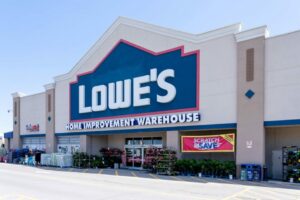
Supply chain disruptions caused by weather-related disasters are happening with increasing frequency.
Last summer, factories shut down across southern China due to a severe heatwave and drought around the Yangtze River basin. Depleted water levels hindered electricity generation at hydropower plants and halted manufacturing for companies such as Toyota and the Chinese lithium battery giant CATL. Stifling temperatures and drought similarly shrank water levels along the Rhine River in Western Europe. Some ships had to reduce their loads by as much as 75% so they could traverse the shallow waters.
One needn’t look far back for additional examples of extreme weather impacting the supply chain. In 2021, an unprecedented freeze across Texas spurred mass blackouts and closed chemical plants, disrupting chemical supply chains and causing global shortages of some plastics. Later that year, Hurricane Ida’s tear through the Gulf of Mexico shut down semiconductor plants. These kinds of disruptions will only grow more common as climate change causes more extreme weather patterns.
Such events are especially difficult for businesses to navigate because they're so unpredictable. A survey from the University of Maryland’s Supply Chain Management Center of 100 manufacturers, including more than 12,000 U.S. and Asia production facilities, found that half of those sites were at high risk of being hit by floods, storms, droughts, heatwaves and fires. Yet most had no business-continuity plans or alternative sites that could be quickly put into operation in the event of a disruption.
To get ahead of likely disruptions, supply chain leaders need strategy and process re-engineering that comprehensively describes their supply base risk exposure, and identifies necessary actions. By ensuring a 360-degree view of the actors and entities making up the supply chain network, companies can cover as many unplanned situations as possible.
Brands and retailers that outsource manufacturing need technology to facilitate better planning far earlier in the process. An agile supply chain platform allows them to adjust rapidly to unforeseen circumstances and limit the impact on the business.
A multi-enterprise platform can provide visibility into freight in transit. With it comes the ability to act on foreseeable delays, rather than reacting at the time of disruption. In particular, technology can help reduce demurrage and detention charges and avoid the follow-up cost of lost shipments. End-to-end transparency and access to real-time data and alerts are key to achieving improved key performance indicators for staff productivity, customer service and cost management.
Logistics operations benefit from the use of a control tower, a connected dashboard for tracking orders all the way to arrival. But a comprehensive supply chain management platform can do much more than that, serving as a control tower of everything, from the earliest stages of product development. The right system should connect not only logistics, but all critical steps in product development, from design to sourcing, costing and quality management.
A unified view of supply chain planning ensures that every department has access to the same accurate, real-time information, allowing businesses to predict disruptions and minimize their impact. Comprehensive supply chain management software creates further efficiencies that build permanent cost savings into retail operations.
Weather-related disruptions are sure to increase, and companies won’t be able to manage them without agile supply chain systems. The right platform can limit the impact on the business, ensuring that companies can source smarter, plan further in advance and stay prepared for whatever storms lie ahead.
Tim Chiu is senior vice president of TradeBeyond.
- SEO Powered Content & PR Distribution. Get Amplified Today.
- Platoblockchain. Web3 Metaverse Intelligence. Knowledge Amplified. Access Here.
- Minting the Future w Adryenn Ashley. Access Here.
- Source: https://www.supplychainbrain.com/blogs/1-think-tank/post/36879-mitigating-weather-related-disruptions-with-software
- :has
- :is
- :not
- $UP
- 000
- 100
- 2021
- 360-degree
- a
- ability
- Able
- access
- accurate
- achieving
- across
- Act
- actions
- actors
- Additional
- advance
- agile
- ahead
- alerts
- All
- Allowing
- allows
- along
- alternative
- an
- and
- ARE
- around
- arrival
- AS
- asia
- At
- back
- base
- battery
- BE
- because
- being
- benefit
- Better
- build
- business
- businesses
- but
- by
- CAN
- catl
- caused
- causes
- causing
- Center
- chain
- chains
- change
- charges
- chemical
- China
- chinese
- circumstances
- Climate
- Climate change
- closed
- COM
- Common
- Companies
- comprehensive
- Connect
- connected
- control
- Control Tower
- Cost
- Cost Management
- cost savings
- could
- cover
- creates
- critical
- customer
- Customer Service
- dashboard
- data
- delays
- Department
- Design
- detention
- Development
- difficult
- disasters
- Disruption
- disruptions
- down
- Drought
- Earlier
- efficiencies
- electricity
- end-to-end
- ensures
- ensuring
- entities
- especially
- Europe
- Event
- events
- Every
- everything
- examples
- Exposure
- extreme
- facilitate
- facilities
- factories
- fires
- For
- foreseeable
- found
- Freeze
- freight
- Frequency
- from
- further
- generation
- get
- giant
- Global
- Grow
- Happening
- help
- High
- Hit
- HTTPS
- hurricane
- Hydropower
- identifies
- Impact
- improved
- in
- Including
- Increase
- increasing
- Indicators
- information
- into
- IT
- jpg
- Key
- leaders
- levels
- likely
- LIMIT
- lithium
- loads
- logistics
- Look
- Making
- manage
- management
- Manufacturers
- manufacturing
- many
- Mass
- Mexico
- mitigating
- more
- most
- Navigate
- necessary
- Need
- network
- of
- on
- only
- operation
- Operations
- or
- orders
- outsource
- particular
- patterns
- performance
- permanent
- plan
- planning
- plans
- plants
- plastics
- platform
- plato
- Plato Data Intelligence
- PlatoData
- possible
- predict
- prepared
- president
- process
- Product
- product development
- Production
- productivity
- provide
- put
- quality
- quickly
- rapidly
- rather
- RE
- real-time
- real-time data
- reduce
- retail
- retailers
- Risk
- River
- s
- same
- Savings
- semiconductor
- senior
- service
- serving
- severe
- shallow
- ships
- shortages
- should
- Shut down
- Similarly
- Sites
- situations
- smarter
- So
- Software
- some
- Source
- Sourcing
- Southern
- Staff
- stages
- stay
- Steps
- storms
- Strategy
- such
- summer
- supply
- supply chain
- supply chain management
- Supply Chain Planning
- Supply chains
- Survey
- system
- Systems
- Technology
- texas
- than
- that
- The
- their
- Them
- These
- they
- those
- Through
- Tim
- time
- to
- Tower
- toyota
- Tracking
- transit
- Transparency
- u.s.
- unforeseen
- unified
- university
- unprecedented
- unpredictable
- use
- Vice President
- View
- visibility
- Water
- Waters
- Way..
- Weather
- weather patterns
- were
- Western
- Western Europe
- will
- with
- without
- year
- zephyrnet













